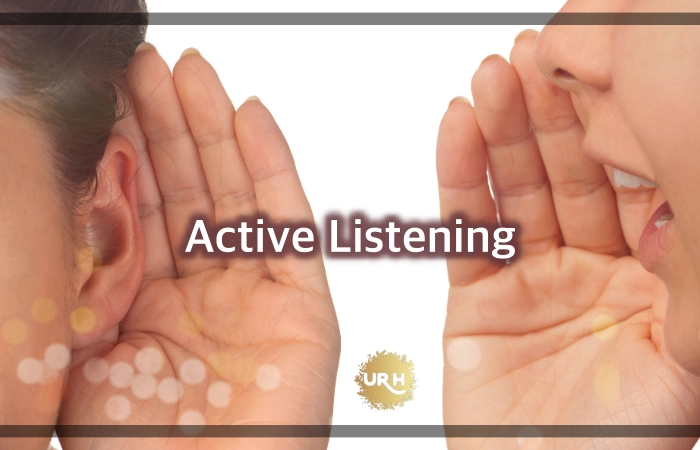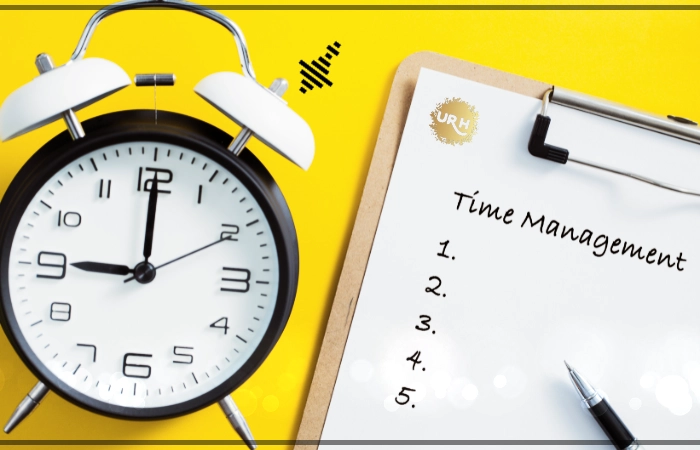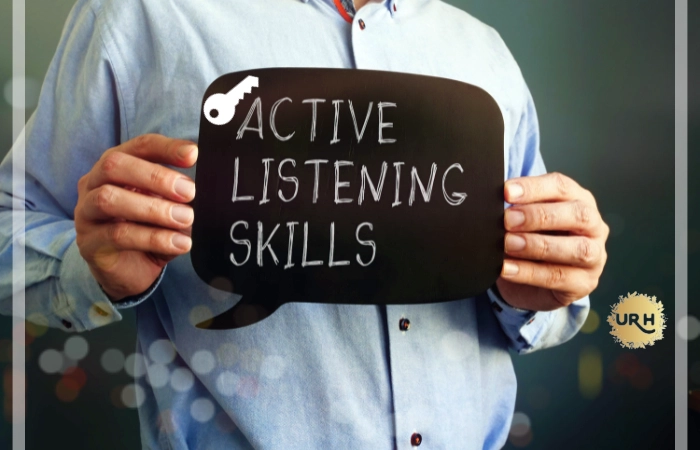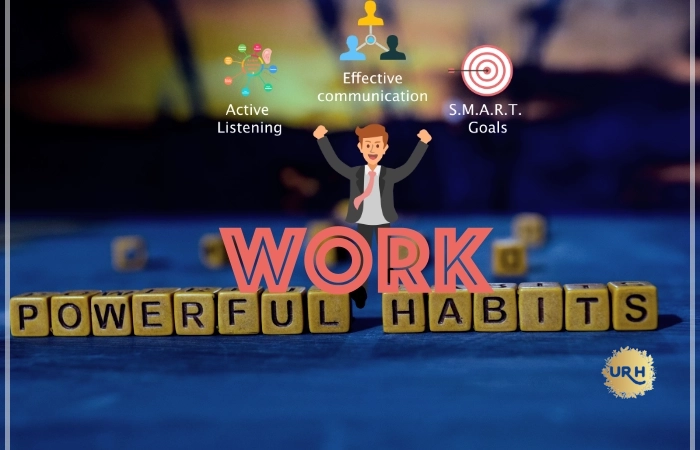Active Listening Explained: Key Active Listening Skills
If you notice nowadays true listening has become a rare skill. And to help you with this situation active listening plays a very important role. If you want to develop this skill for yourself, i am sure you will find this resource useful.
Have you ever realised that you are engaged in a conversation but your thoughts are going somewhere else. And you are just hearing the other person?
With so much expectation from a day and so many handy distractions, we are losing our patience to listen to someone else.
Active listening is a mindful practice that involves fully engaging with the speaker, it goes beyond passive hearing and transforms conversations into exchange of words.
So when you practice active listening, you are not only focused on words but you are also observing the body language of the spiker.
When you learn and understand these essential components of active listening, it helps you improve your listening skills and become a more effective communicator.
Practicing these techniques of active listening, you’ll create a positive effect on your personal and professional relationships.
What is active listening ?
Along with hearing when you are fully focused on what the other person wants to say, you are not just listening but you are also observing his body language, that is what active listening is.
You demonstrate empathy when you are genuinely trying to understand the message with complete focus.
Active listening plays an important role in effective collaboration and building trust between team members in the office environment.
When it comes to the workplace active listening is not only about formal meetings, but it is also about everyday normal interactions with colleagues from the same department or another department too.
Improve teamwork and prevent misunderstandings and conflicts by implementing the practice of active listening, as messages/ Communication is understood very well.
While you listen actively you demonstrate respect for others and it also provides you the chance of also validate their message and hence reducing the chances of misinterpretation.
When you are in a leadership position listening actively to the team members even becomes more critical and important by doing this you create a safe space for open communication.
When your team members recognise the same it helps them to build the trust and enhances team members engagement in conversation.
Develop Active Listening Skills – Techniques And Steps
You will agree, developing active listening skills is a continuous process that requires intention, practice, and effort.
By learning key elements of active listening and how to implement specific techniques and following essential basic steps you can always improve your active listening skill.
Let’s explore my suggested top 7 key elements amongst many practical ways to develop active listening skills.
1. Be fully present:
One of the fundamental aspects of active listening is being mentally and emotionally present in the conversation. Eliminate distractions by putting away your phone, closing unnecessary tabs on your computer, and focusing solely on the speaker.
By giving your undivided attention, you signal another person’s respect and create an environment conducive to effective communication.
2. Practice empathy:
Think from the speaker’s perspective and you will understand how you feel when someone is either giving attention to what you want to say or not.
So, when you are listening to the speaker with full dedication and attention you are actually demonstrating empathy.
When you are doing so listening to a speaker with empathy you are actually connecting on a deeper level and you will respond in a supportive and understanding way.
3. Ask thoughtful questions:
When you need another person to elaborate more and you still want some more information on what the other person wants to say, you can ask open ended questions.
Asking open ended questions encourages the other person to explain in more detail what he/she wants to say. Also, the quality of the questions you ask demonstrates your interest and curiosity while promoting further dialogue.
4. Practice reflective listening:
When we are at the stage in conversation to agree on something, we summarize the speaker’s words to ensure mutual understanding and eliminate any gaps, this is reflective listening.
So, now speaker has shared their thoughts, you take a moment to rephrase what they said and confirm your understanding.
This technique not only shows active engagement but also helps clarify any potential misinterpretations of a message.
5. Maintain non-verbal cues:
Maintaining eye contact, nodding, and open body language, are essential while listening to other people. It helps you to build trust during your conversation.
These practices are part of non-verbal communication. When you practice these skills you clearly show that you are engaged with the speaker’s message.
6. Practice active listening in meetings:
The regular meetings in corporate are a good chance to participate and practice active listening. So, I suggest taking this opportunity, to engage actively by taking notes and asking relevant questions.
By actively listening in meetings, you get a chance to enhance your own skills.
7. Seek feedback:
Sometimes you need to take the initiative and seek feedback from your colleagues or supervisors. This feedback can help you assess your own progress and identify areas where you can invest your time for improvement.
When you do this you actually build a trust based relationship with your colleagues or supervisors, as you demonstrate that you are open for learning.
Benefits of Active Listening
What Soft Skills Will Help In Active Listening
Active listening will also need some soft skills to be developed to succeed in active listening conversations.
It’s all about people communicating with each other which basically involves your ability to listen to people without judging them so that you get the message clearly.
And that’s what we call listening people with an open mind. If you fail to do so basically you will choose the person and the message based on your experience and this will keep you away from succeeding in the meaningful conversation.
So to succeed in your endeavour of developing active listening skills you also need to work on the below soft skills to achieve your goal
- Positivity & Self-Motivation – Maintain a positive and optimistic outlook
- Empathy – Understand and relate to others
- Body Language – Nonverbal signals used to communicate
- Emotional Intelligence – Recognize & manage own emotions
- Patience – Remain calm and composed
- Kindness – Being kind to others
- Compassion – Understanding somebody who is suffering
Active Listening Examples
If explained with easy examples, anything we want to learn is the most straightforward method to understand the concepts. So, I am listing down my 5 examples of Active listening Skills.
Examples 1. Performance Review Conversations:
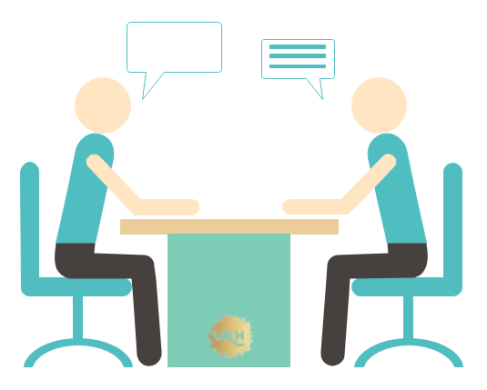
Performance review conversations are one of the most important meetings in corporate life as both supervisor and subordinate get more insight into the progress.
As a supervisor, while conducting performance review meetings when you start asking open ended questions such as what you think your strengths are and where you need organization help to improve yourself.
Now you are actually actively listening to your subordinates from a prospective understanding. These kinds of conversations create a safe space for team members to share their thoughts and concerns along with their future goals. This ultimately helps both the individual and the organization
Examples 2. Conflict Resolution:
Wherever there is a conversation in the workplace environment there is also a chance of arising a conflict. Active listening skills please an important role in resolving conflicts as one party is actually ready to listen with the intent to understand the message.
Sometimes you as a third person can also play a role in conflict resolution by listening actively to both parties. You listen attentively to each person’s perspective without interrupting or passing judgment.
By actively listening and acknowledging their concerns, you help them find common ground and reach a mutually agreeable solution, which is the best possible choice at that moment.

Examples 3. Client Meetings:

Active listening is important and much needed when engaging with clients as it is a critical conversation. Suppose you’re meeting with a potential client to understand their needs and requirements.
You actively listen by giving your undivided attention, maintaining eye contact, and asking relevant follow-up questions to gain deeper insights. By actively listening, you can address the client’s concerns.
Once you have the complete requirement of your customer you can work with the internal team and create a required solution to meet the requirements of your client. Once you have prepared your solution have a review meeting with the client and incorporate any feedbacks which improves the quality of your solution.
Examples 4. Team Brainstorming Sessions:
You encourage your team members to ask open ended questions and also not hesitate to provide constructive feedback.
This will help team members to build a trust-based relationship while working in a collaborative way. And during such opportunities by actively listening and considering everyone’s input you create a trust base working atmosphere.
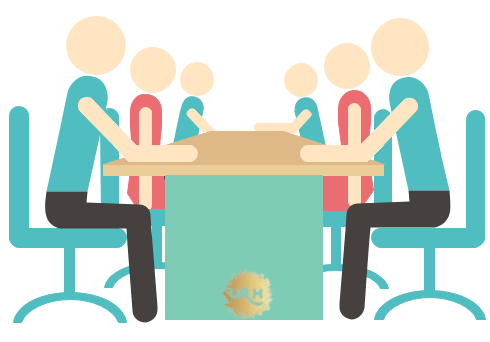
Examples 5. One on One Coaching or Mentoring:

Whenever you are coaching or mentoring someone in your work environment your team member is actually testing you and this makes this conversation even more important.
As a coach or a mentor when you are having this conversation you have to actively listen to the team members’ individual challenges and aspirations. In the end, you need to empower and motivate individuals to overcome obstacles and achieve their desired goals.
List of Key Active Listening Skills
- Face the speaker and have eye contact during the conversation
- Observe non-verbal cues too
- Don’t stop the speaker in-between
- Show that you’re listening
- Stay focused
- Ask questions when required
- Summarise
1. Face the speaker and have eye contact during the conversation
When you are facing the speaker you will engage with the speaker and you will also be able to observe the body language and gestures (non-verbal cues).
Making eye contact during the conversation helps us gather information about what the other person is thinking and have trust during the conversation. Now both tease things will help you to receive the message with greater understanding.
2. Observe non-verbal cues too
Observing non-verbal cues can actually give you more details about the other person and also you will have a greater chance of understanding the message correctly. The non-verbal cues like appearance, facial expressions, gestures, eye gazing, movement, and posture.
3. Don’t stop the speaker in-between
Now when someone is delivering the message it is a good idea to let the other person finish what he/she wants to say. Maybe in the next sentence, he will answer what you want to ask.
So be patient and listen carefully. Stopping the speaker in between may disturb the flow of speech.
4. Show that you’re listening
Facing the speaker, making eye contact, and nodding in between will send the signal to the speaker that you are listening and receiving the message. This also help the speaker to judge based on your reaction that his message is received.
5. Stay focused
Kee away the distraction, and focus while learning, this will help you and the speaker both. One you will not ask the speaker to repeat what he said, so he/she doesn’t have to repeat and it will also save time for both.
6. Ask questions when required
Do not ask questions for the sake of just asking. If you have not understood or want to clarify you can ask the question. Asking questions will also help to avoid any misunderstanding.
7. Summarise
Summarise the message is a good idea, as you will wright it in your own way you will think along. And when you share with the speaker, there are very less chances of misunderstanding and missing some part of the message, as the speaker will help you to add if you have missed any point.
This is the list and a brief description of the 7 key factors of active listening. So, I suggest picking one that is most relevant for you in this movement from 7 active listening skills and start working on it.
Additional Tips On Active Listening Skills
1. Be Mindful of Your Body Language:
Your body language and your expression play an important role in active listening. Maintain an open and welcoming posture, make eye contact, and nod occasionally to show your engagement during the conversation. Avoid crossing your arms or displaying signs of impatience behavior.
2. Avoid Interrupting:
Do not jump to the conclusion and interrupt the speaker while he’s talking. Give the speaker /other person time to express themselves completely.
Interrupting can break the flow of the conversation and make the speaker feel disregarded. Instead, listen attentively and save your thoughts for an appropriate moment, such as when they pause or ask for your input.
3. Practice Reflective Summaries
Once the speaker has finished sharing their thoughts, now it’s your turn to provide a brief summary of what you understood during the conversation. You can provide a brief summary of what you understood. This helps confirm your comprehension and shows the speaker that you genuinely listened.
Frequently Asked Questions: Active Listening
Why is active listening important?
It enhances communication by you demonstrating interest, understanding, and respect for the speaker.
What is active listening in communication?
Active listening in communication refers to the process of fully engaging with a speaker, both verbally and non verbally, to understand their message and respond appropriately.
What is the purpose of active listening?
Promote clear and effective communication between individuals
Establish rapport
Understand different perspectives
Build trust and strengthen relationships
Which active listening technique involves empathy?
Pay attention during listening: When you do so, you don’t miss any of the points another person is saying.
Listening without judgment: When you do so you are not in a hurry to respond and will have enough time to analyse the situation.
These techniques will allow us to listen empathically.
what are the 7 skills for active listening?
Understand the intent of communication
Pay attention to body language
Clarify your understanding
Keep away yourself from early judgment
Summarize
Do not Interrupt
Do not get distracted
Conclusion:
So these 7 active listening techniques and active listening skills can really help you excel in your personal and professional life.
So my recommendation is to choose any of your favourites among the suggested techniques and start implementing them in your daily conversations.
You will see remarkable progress during your conversations as you start practicing active listening on a regular basis.
Share your experience and knowledge with others. Be an advocate for active listening within your team or community.
Let me know your thoughts on active listening in comment section below.

